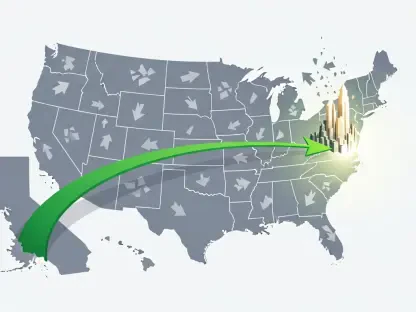Imagine a scenario where small businesses engaged in innovation and technology development secure their data for an extended period without the dread of premature relinquishment. The recent rule published by the Department of Defense (DOD) on December 17, 2024, aims to establish precisely that. The final rule, which amends the Defense Federal Acquisition Regulation Supplement (DFARS) in terms of data rights under the Small Business Innovation Research (SBIR) and Small Business Technology Transfer (STTR) programs, becomes effective on January 17, 2025. This rule incorporates several significant changes and provisions that are set to bring stability and clarity to data protection for small businesses.
Codifying the 20-Year Data Protection Period
Departure from the Old 5-Year Protection Term
One of the most remarkable provisions of this rule is the codification of the 20-year data protection period for SBIR/STTR data, a move that replaces the previous 5-year term. Before this amendment, small businesses could extend the protection through subsequent SBIR awards, leading to indefinite data rights. However, the definitive 20-year term now solidifies the duration, providing businesses a guaranteed timeframe to safeguard their innovations. This shift alleviates businesses from the burden of continuous extensions and presents a clearer and more predictable timeline for data protection. The new rule gives the DOD the opportunity to balance intellectual property rights while ensuring technological advancements remain protected within a reasonable timeframe.
This shift from a potentially endless extension to a finite period is not just a vendor-friendly change; it is also beneficial for the government. By knowing the exact duration of data protection, the government can plan its acquisition strategies more efficiently. The rule also replaces the government’s rights post-protection period from unlimited rights to perpetual Government Purpose Rights, ensuring a fair use of data after the protection window has lapsed. This updated approach aligns with modern practices, securing the interests of both the contracting parties and promoting a collaborative environment for innovation.
Harmonizing Data Rights Provisions
Another significant change brought by this rule is the alignment of data rights provisions for the SBIR and STTR programs. The previous inconsistencies in contract provisions often created confusion and potential disputes between small businesses and the government. By ensuring consistency, the DOD has taken a major step toward simplifying the contractual landscape. Key adjustments to DFARS 227.7104-1 highlight that contractors cannot be forced to forfeit their data rights beyond the SBIR/STTR provisions. While the government has the authority to assess how these limitations might affect source selection, the rule ensures that contractors maintain their data rights through a fair and transparent process.
Moreover, DFARS 227.7104-2 articulates that special license rights negotiations can only occur after the award and must be mutually agreed upon. This provision protects contractors from being pressured into unfavorable terms before the award, ensuring a level playing field. The harmonization of definitions, such as “SBIR/STTR data” and “generated,” further contributes to the clarity and uniformity across various DFARS provisions. By including SBIR Phase III projects within the scope of data rights, the rule underscores its comprehensive approach to data protection, embodying a coherent policy that spans the entire lifecycle of innovation.
Addressing Marking Requirements
Public Feedback and Deferred Changes
A noteworthy aspect of the final rule was the decision to omit several proposed changes related to the marking of technical data, particularly the imposition of a new marking requirement for Unlimited Rights data. The public feedback played a crucial role in shaping this outcome. Many industry stakeholders expressed concerns regarding the practicality and implications of the proposed marking requirements. In response, the DOD has decided to address these concerns separately, highlighting its attentiveness to stakeholder input and the complexities involved in technical data handling.
While some might argue that deferring the marking requirements adds an element of temporary ambiguity, this cautious approach illustrates the DOD’s intent to manage regulatory changes thoughtfully. By considering public feedback and promising to tackle the marking requirements comprehensively at a later stage, the department underscores its commitment to clear, practical, and balanced policy changes. The regulations provided sufficient time for stakeholders to understand and adapt to the new data rights framework while ensuring that any additional marking requirements don’t become counterproductive.
Future Considerations and Industry Implications
For small businesses involved in defense-related research and development, these changes imply a more stable and predictable environment. The extension of data protection to 20 years means that companies can innovate with the assurance that their intellectual property will be protected for a significant period. This confidence can foster an atmosphere conducive to developing cutting-edge technologies. Additionally, the alignment of SBIR and STTR data rights provisions reduces administrative overhead and potential legal disputes, allowing businesses to focus more on innovation rather than contractual complexities.
The DOD’s final rule represents a balanced approach to enhancing data protection for small businesses while addressing government interests. It solidifies data rights, harmonizes definitions, and acknowledges the importance of stakeholder feedback. By shaping policies that reflect industry needs and regulatory practicality, the DOD has set a precedent for future amendments. The changes enacted will likely serve as a foundation for further refinement and ensure that small businesses remain a vital part of the technological innovation landscape in national defense.
Envisioning a Balanced Regulatory Environment
Effective Government-Contractor Collaboration
As the final rule takes effect on January 17, 2025, small businesses must prepare to navigate the new data rights landscape. The changes introduced are not merely about extending data protection but also about fostering a more balanced and transparent environment for government-contractor collaboration. With the certainty of a 20-year protection window, businesses can better align their research and development timelines. This fixed period facilitates longer-term planning and investment, which is critical for meaningful technological advancements.
An equally important aspect is the prevention of forced data rights relinquishment pre-award. By negotiating special license rights only post-award, contractors can approach agreements with a solid understanding of their terms, backed by fair negotiation processes. This provision is likely to foster more equitable and mutually beneficial relationships between small businesses and the government, paving the way for sustained innovation without compromising data rights.
Moving Forward with Confidence
Imagine a scenario where small businesses focused on innovation and technology can secure their data for extended periods without fearing the early loss of control. This vision is becoming a reality with a new rule issued by the Department of Defense (DOD) on December 17, 2024. The final rule, which modifies the Defense Federal Acquisition Regulation Supplement (DFARS) regarding data rights under the Small Business Innovation Research (SBIR) and Small Business Technology Transfer (STTR) programs, will take effect on January 17, 2025. The updated regulation introduces several important changes and provisions designed to provide stability and clarity in data protection for small businesses. These updates aim to foster a more secure environment for small enterprises, ensuring their innovations are protected, and setting the stage for long-term growth and development. This supportive framework is anticipated to encourage entrepreneurial ventures by safeguarding intellectual property and promoting sustained technological progress.









